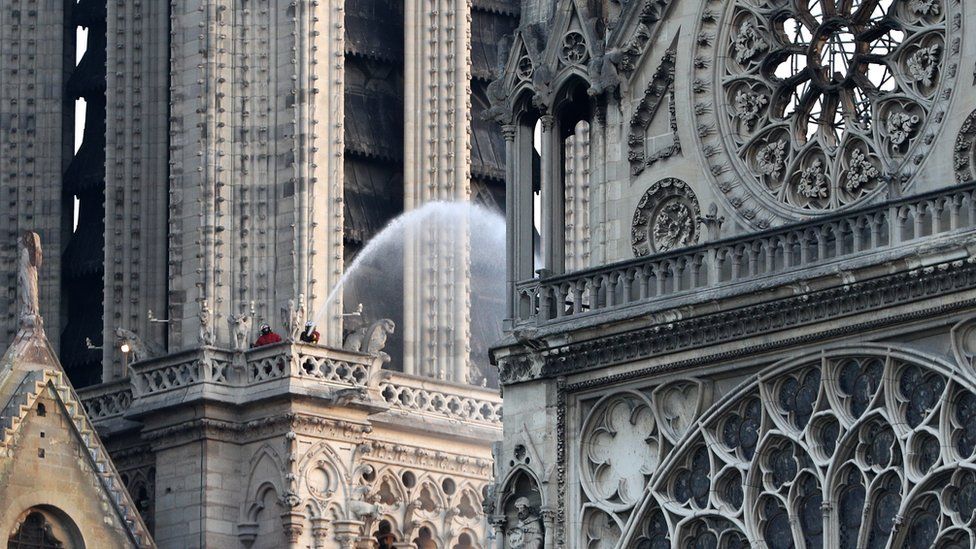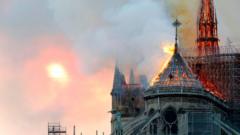

Saint Thomas with the face of Eugène-Emmanuel Viollet-le-Duc - © Notre-Dame de Paris He also replaced various gargoyles and statues of saints, of which the statue of Saint Thomas shows an obvious resemblance to the architect himself. This has resulted in him redesigning the spire that collapsed during the fire this April.

Īccording to Viollet-le-Duc, almost any treatment is permitted as long as it is in line with the artist’s intention, risking the creation of ‘pristine‘ conditions that might never have existed and were never part of the original idea of the artist. His approach to the restoration of the cathedral became highly criticized, and his approach in contrast to that of the British critic John Ruskin (1819-1900) who operated during the same time period forms one of the most classical examples of the controversies conservation and restoration practices still have to deal with today. Le Duc’s restoration infuriated many, because he replaced lost ornaments with new ones that could never be historically correct. In the nineteenth century, Eugène-Emmanuel Viollet-le-Duc (1814-1879) led the project of restoring the Notre-Dame after it was used as a storage space. It is not the first time the Notre-Dame will undergo a mayor restoration. – © National Geographicĭilemmas in conservation: patina versus artist’s intention Tech-savvy art historian Andrew Tallon uses lasers to unlock the builders' secrets behind the construction of the National Cathedral in Washington, D.C. There are a lot of considerations to be made to be able to determine how the cathedral should be restored: how far do we go back in time - to the Middle Ages or the nineteenth century, or do we use a more modern solution -? Who decides how the cathedral should be restored? I also will also examine how and if Tallon’s 3D scans can be used and help in overcoming these binaries. In this blog post I want to shed light on the dangers of restoration and conservation and the binaries that have to be overcome during this process. One could think that the solution is easy: let’s just recreate everything. The data he collected make it possible to three dimensionally reconstruct the entire cathedral in very high detail, including its precious artworks. Luckily, Andrew Tallon– art historian and professor at Vassar College in Poughkeepsie, New York – and his team thoroughly scanned the entire interior and exterior of the cathedral in 2012. Besides natural threats such as mold due to the high humidity because of the water that was used to extinguish the fire, the restoration of the cathedral itself is or can be a threat to the structure and the history of the building.ĭamage report of the Notre-Dame - © BBC News Even though the fire department declared that the fire was extinguished around 10 AM on the 16th of April, the threat is far from over. The wooden spire, the roof and 70% of the artworks, relics and objects that adorned the interior of la Notre-Dame are lost. The blaze spread rapidly and it took 400 brave fire fighters several hours to extinguish the fire. It is the moment when the first flames started shooting up around the spire of the French medieval cathedral. What was meant to be a big renovation project resulted in destruction, a catastrophe and a loss of thirteen centuries of European art history. The documentary is available to watch on BBC iPlayer until 15 thMay.Paris, France, April 15, 2019, 6.43 PM CEST– a moment in time that will change Europe’s history forever. The search for innovative methods of protecting the glass takes the programme to York Minster, where newly-developed UV-filtering protective glazing is being installed on an unprecedented scale. She also discusses her identification of micro cracks, caused by thermal stress, which will require stabilisation using adhesives.

Claudine Loisel reveals her work to identify the extent of lead contamination across the glass surfaces and develop a cleaning strategy.

Of particular interest to Vidimus readers will be the insights provided into the conservation of the stained glass. The documentary recounts the damage caused by the fire on 15 April 2019, and traces the complex and challenging work which has taken place over the past year to stabilise and safeguard this magnificent building. Vidimus readers may be interested in the BBC’s recent documentary Rebuilding Notre-Dame: Inside the Great Cathedral Rescue, if they have not already had chance to watch it.


 0 kommentar(er)
0 kommentar(er)
